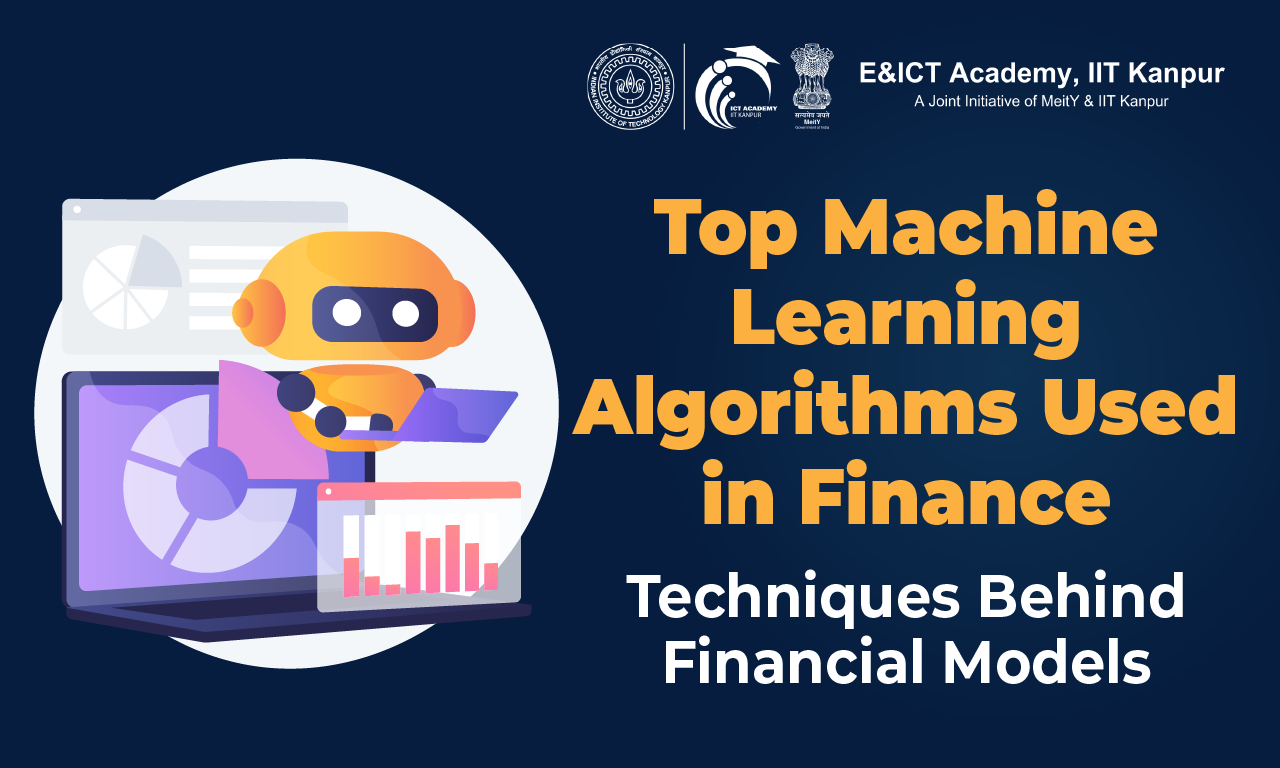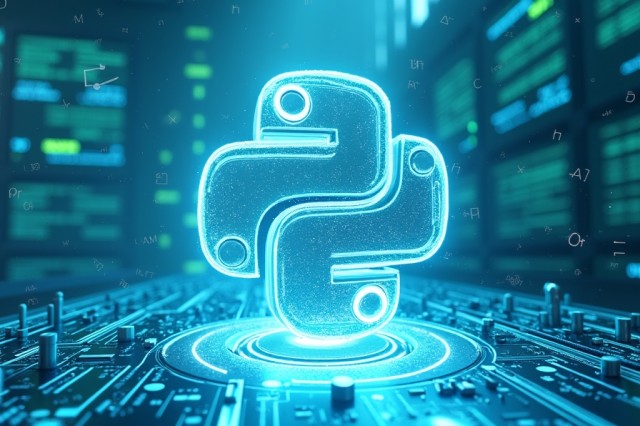Top Machine Learning Algorithms Used in Financial Services

Top Machine Learning Algorithms: The financial services industry has rapidly adopted machine learning (ML) technologies over the last decade. From fraud detection to credit scoring, algorithmic trading to customer service, ML is redefining how financial institutions operate, assess risk, and deliver value. As regulatory pressures mount and customer expectations rise, machine learning provides a path to both efficiency and innovation. However, not all ML algorithms serve the same purpose. In this blog, we’ll explore the most impactful machine learning algorithms used in financial services and their practical applications.
Most Widely Used Machine Learning Algorithms in Finance
The finance industry goes through enormous amounts of structured and unstructured data on a daily basis. To help make sense of it, organizations use a variety of machine learning algorithms — each selected based on specific business objectives such as accuracy, interpretability, and speed. Below are the ten most commonly used ML algorithms in finance:
1. Logistic Regression
Application: Credit Scoring, Loan Default Prediction
Logistic regression remains one of the most widely used ML algorithms in financial services. Despite its simplicity, it performs well in binary classification problems like predicting loan default or customer churn.
Why It Works:
- It provides interpretable results, necessary for compliance in regulated environments.
- Useful when the relationship between input features and outcomes is linear.
Example:
Banks use logistic regression to determine whether a customer is likely to repay a loan. By analyzing features like income, employment status, and past defaults, the model estimates a probability that informs lending decisions.
2. Decision Trees and Random Forests
Application: Risk Assessment, Fraud Detection, Customer Segmentation
Decision Trees provide a transparent framework for classification and regression tasks. Random Forests, an ensemble of decision trees, improve predictive power and reduce overfitting.
Key Benefits:
- Easy to interpret and visualize.
- Can handle both numerical and categorical data.
- Resistant to outliers.
In Financial Services:
- Random Forests are widely used to detect fraudulent transactions by analyzing thousands of data points, such as transaction time, location, and purchase patterns.
- Banks segment customers based on spending habits or risk levels using decision trees.
3. Support Vector Machines (SVM)
Application: Market Forecasting, Pattern Recognition
Support Vector Machines are highly effective in complex classification problems, especially where the margin of separation is tight.
Financial Relevance:
- SVMs are ideal for time series data where the goal is to detect minor but significant deviations in financial signals.
- Hedge funds and trading desks use SVMs to detect arbitrage opportunities or market manipulation.
SVMs are powerful but often computationally intensive in practice. They also need careful feature engineering, limiting real-time applications.
4. K-Nearest Neighbors (KNN)
Application: Customer Profiling, Product Recommendation
KNN is a lazy learner algorithm that classifies new data points based on the similarity to existing data.
Key Use Cases:
- In banking, KNN is used to group customers with similar behavior for personalized marketing.
- Insurance firms apply KNN to recommend products based on peer group behavior.
KNN is easy to implement but sensitive to data scaling. It can be inefficient on large datasets without proper indexing techniques.
5. Gradient Boosting Machines (GBM, XGBoost, LightGBM)
Application: Credit Risk Modeling, Revenue Forecasting
Gradient boosting algorithms create strong models from weak learners. These learners are usually decision trees in financial applications. XGBoost and LightGBM are widely favored in the industry. They offer superior speed and performance over other boosting methods.
Why Financial Firms Prefer GBMs:
- High accuracy with minimal tuning.
- Effective in capturing non-linear relationships.
- Handle missing data well.
Industry Adoption:
- Credit bureaus and lenders use XGBoost for scoring applications due to its robustness and ability to handle imbalanced datasets.
- Asset managers use LightGBM in portfolio optimization and performance forecasting.
6. Neural Networks (Deep Learning)
Application: Algorithmic Trading, Financial Forecasting, Fraud Detection
Neural networks, especially deep learning models, handle complex patterns exceptionally well. They excel at modeling non-linear relationships in large, rich datasets.
Subtypes in Use:
- Feedforward Neural Networks for basic predictions.
- Recurrent Neural Networks (RNNs) for time series forecasting.
- Convolutional Neural Networks (CNNs) are used in analyzing visual documents like scanned invoices or KYC forms.
Real-World Examples:
- Fintech companies use RNNs for stock price prediction.
- Credit card companies apply deep learning to identify fraud patterns in real-time.
Despite their potential, neural networks are often seen as “black boxes,” making them difficult to interpret and justify under strict financial regulations.
7. Naïve Bayes
Application: Spam Detection, Insurance Claim Classification
Naïve Bayes classifiers are probabilistic models based on Bayes’ Theorem, assuming feature independence.
Why It Still Matters:
- Extremely fast and scalable.
- Performs surprisingly well in text classification and anomaly detection tasks.
Financial Uses:
- Email filtering systems in banks use Naïve Bayes to identify phishing and spam.
- Insurance firms classify claims for automated processing and flag suspicious entries.
Its main limitation lies in the assumption of feature independence, which may not always hold true in complex financial data.
8. Natural Language Processing (NLP) with ML
Application: Sentiment Analysis, Risk Management, Regulatory Compliance
Natural Language Processing, NLP isn’t a single algorithm but a suite of ML methods designed to interpret human language. It’s increasingly important in financial services.
How NLP Is Applied:
- Sentiment Analysis on news articles or social media to influence trading strategies.
- Text Classification for identifying compliance issues in contracts or emails.
With increasing volumes of unstructured text data, NLP is helping firms comply with legal requirements, monitor reputational risk, and enhance customer engagement.
9. Reinforcement Learning (RL)
Application: Portfolio Management, Robo-Advisory Systems
Reinforcement learning focuses on learning through trial and error to maximize cumulative rewards, making it suitable for dynamic environments like financial markets.
Key Advantages:
- Adapts to changing market conditions.
- Optimizes long-term investment strategies.
Practical Use:
- Robo-advisors use RL to optimize asset allocation based on user goals.
- Quant funds experiment with RL to develop autonomous trading agents.
Due to its complexity, RL is still in the research and pilot phase for many financial institutions, but it shows immense potential.
Final Thoughts
Machine learning is reshaping finance with speed, accuracy, and efficiency. The right algorithms help institutions predict trends and reduce risks. However, success depends on more than just using powerful models. Business goals, clean data, and compliance must guide every decision.
As finance becomes more digital, smart tools offer a real advantage. From simple regressions to deep learning, every model serves a purpose. Choosing wisely can boost performance, trust, and customer satisfaction.
Recommended Courses

Advanced Certificate Program in AI for Leaders

AI for Managers

AI for Managers

Artificial Intelligence

Data Analytics using AI

Deep Learning with Generative AI for Computer Vision

Generative AI

Generative AI Course

Machine Learning with Python

Professional Certificate Course in Generative AI and Machine Learning

Professional Certificate Program in Leadership with AI


